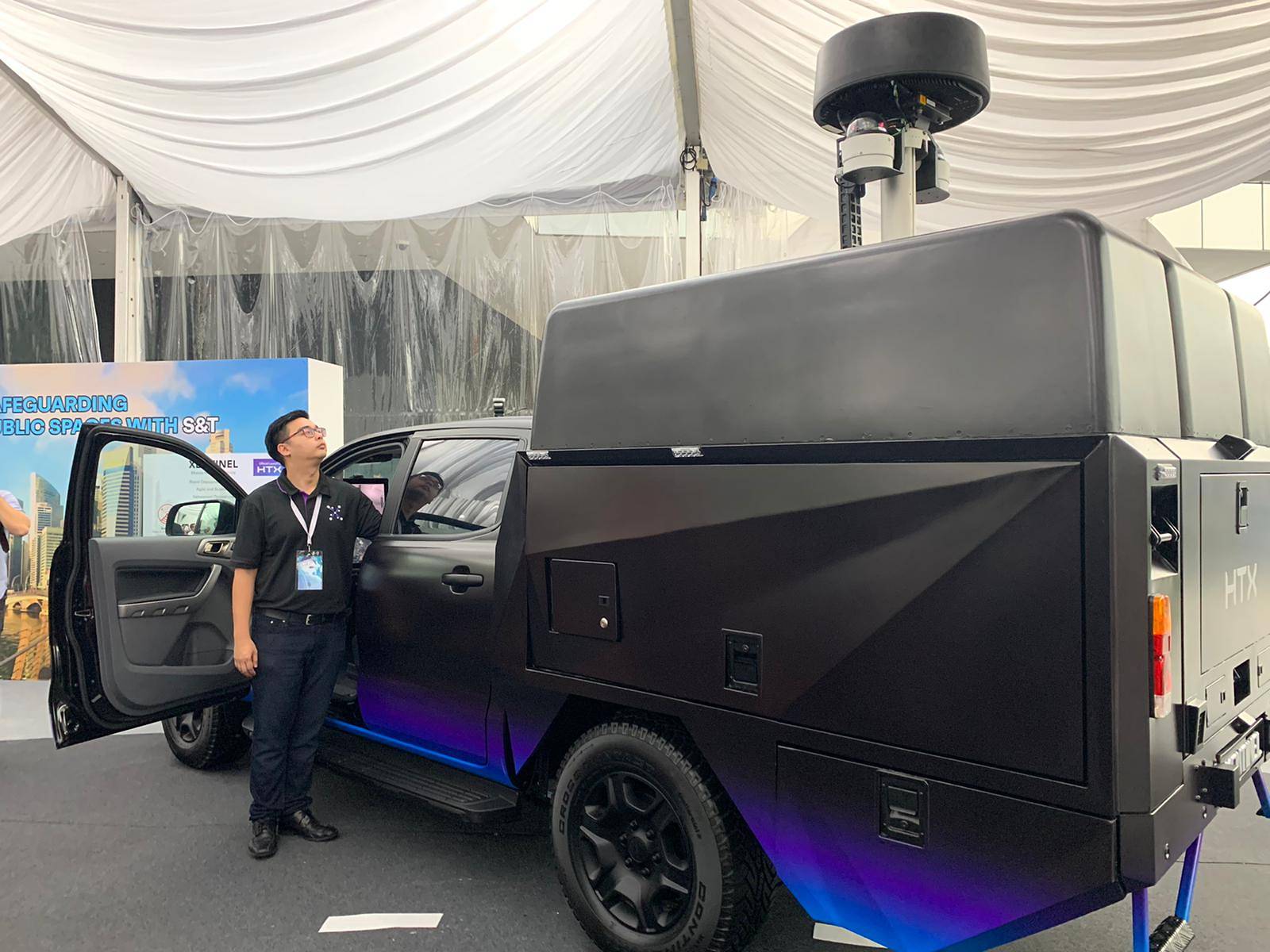SINGAPORE: Using crime scene fingerprints to establish only the identity of a perpetrator might soon be a thing of the past.
The new Home Team Science and Technology Agency (HTX) has come up with a new method to analyse and extract more investigative leads from fingerprints, including gender and ethnicity as well as whether the person had handled narcotics or explosives.
READ: PM Lee launches new Home Team science and tech agency
HTX said it worked with the Nanyang Technological University to develop the “innovative” technique, which can also work on smudged and low-quality, invisible fingerprints left on a surface.
“The new method uses a novel nanopowder formulation and a method of analysis via mass spectrometry,” the agency said in a media release on Monday (Dec 2). “After the print is dusted and lifted, it is fed into a mass spectrometer to detect the residues of interest.”
Singapore Prime Minister Lee Hsien Loong on Dec 2, 2019 watches a demonstration on an advanced fingerprint testing technique being developed by the new Home Team Science and Technology Agency. (Photo: Aqil Haziq Mahmud)
HTX said it will implement the technique in the next one to two years, adding that it plans to expand the technique so it can give more clues about someone’s lifestyle.
“When implemented, there will be automated protocols to process and analyse data obtained from the prints,” HTX said. “Home Team officers will be able to retrieve targeted information on their own without relying on forensics officers.”
HTX added that it is one of a few security agencies in the world pursuing this research.
Indeed, the 1,300-strong HTX – a statutory board under the Ministry of Home Affairs – aims to use science and technology to “exponentially” improve the Home Team’s operations and be its force multiplier to keep Singapore safe and secure.
Prime Minister Lee Hsien Loong, who officially launched the agency on Monday, said it will help take the Home Team “to the next level”.
ROBOTIC DOG
HTX said it is exploring the use of two biologically-inspired robots as first responders to support disaster rescue efforts and save lives.
One is a four-legged robotic dog equipped with capabilities like thermal cameras and sensors to map its surroundings, reducing the time taken for effective life detection.
The Rover-X robotic dog can also navigate different terrains and climb stairs autonomously with minimal operator intervention, making it useful to deploy in unstructured and hazardous places deemed unsafe for humans.
HTX is also testing out a Life Detection Robot which can crawl through tightly packed debris and rubble to search for and detect life in a disaster zone.
It comes with sensors, a thermal camera to detect heat signatures, as well as high-definition cameras and microphone. It also has an on-board laser range finder which can produce three-dimensional maps of explored environments to generate paths for rescuers.
Overall, HTX said its scientists and engineers will work hand-in-hand with Home Team forces on the ground to “intimately” understand their challenges and better anticipate the Home Team’s science and technology needs.
“It is thus well-positioned to develop customised solutions for use by the Home Team and grow new and deep organic capabilities in science and technology for homeland security,” the agency added.
MOBILE DRONE FIGHTER
For instance, it is helping officers counter drone threats by developing a XENTINEL mobile response vehicle which can detect drones up to 1km, requires only one officer to operate and can be deployed within minutes.
Traditionally, anti-drone operations require a team of officers equipped with drone jammer guns to be deployed in the vicinity of the incident location.

The XENTINEL vehicle has a retractable sensor dome. (Photo: Aqil Haziq Mahmud)
“This mode of operation is labour intensive, and requires significant resources for larger locations and events,” HTX said. “Reliance on human senses limits the detection of the drones at several hundreds of meters at best, with very short time windows for effective interdiction.”
HTX said the XENTINEL will be ready for operational trials with the police in the next few months, adding that it foresees completing development and trial evaluation within a year.
READ: New science and tech agency for Home Team due this December after passing of Bill
DEVICE SCANNER
Another piece of technology designed to help officers is the Digital Forensic Kiosk, which enables frontline officers untrained in forensics to review electronic devices and media for evidence and generate leads faster.
The self-service kiosk, specifically developed for non-technical users, extracts content from devices like mobile phones and storage media and lets officers scan for possible evidence.
To complement this, a new digital evidence search tool called DIGEST will automate the forensic processing of a large amount of data. It ingests and processes data required for examination, allowing officers to review them using a user-friendly interface and also generate customised reports.
Other technology being developed by HTX include new means of analysing small amounts of DNA almost 90 per cent quicker than conventional methods, and a command and control centre that autonomously flies drones beyond line of sight for public safety as well as search and rescue operations.
The latter includes delivering supplies like automated external defibrillators to hazardous and remote sites.
Mr Lee watching a demonstration on the HTX’s automated border control system. (Photo: Aqil Haziq Mahmud)
HTX has 13 centres of expertise in different areas, ranging from robots, automation and unmanned systems to biometrics and profiling, and cybersecurity to data processing and artificial intelligence (AI).
The agency was first announced in Finance Minister Heng Swee Keat’s budget speech in February.
HTX said on Monday it will build new partnerships with industry, research institutions, academia and start-ups, manage the Home Team’s procurement functions and enable more cooperation across the entire homeland security ecosystem.
“HTX will integrate a full range of science and technology capabilities in homeland security to solve crimes, save lives, secure borders and safeguard our public spaces,” it stated.




